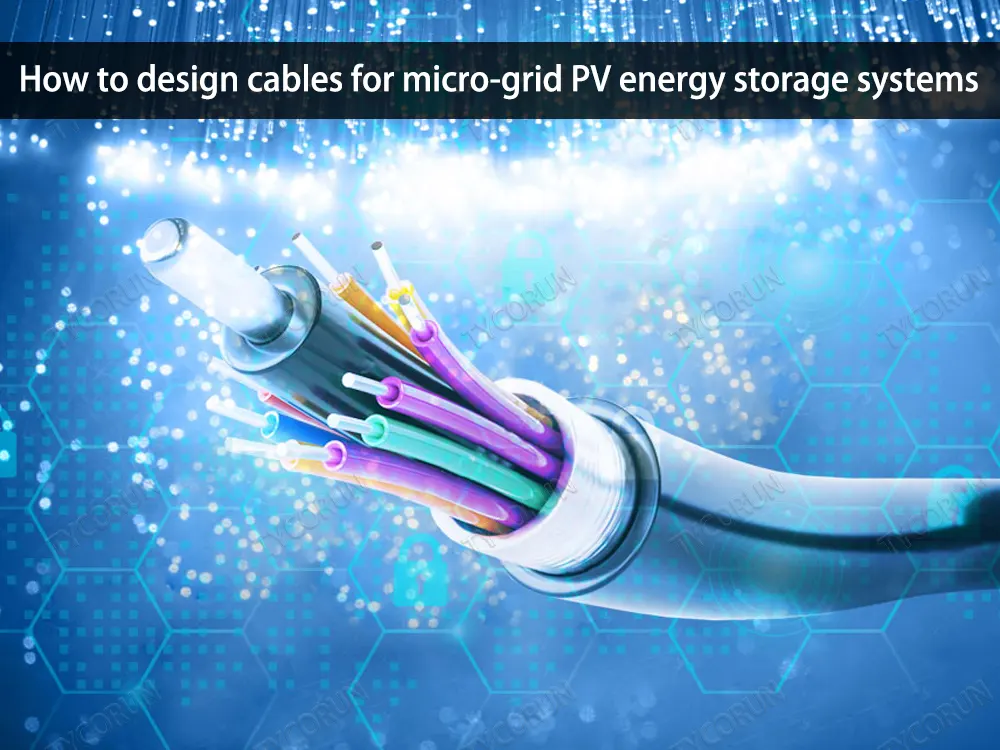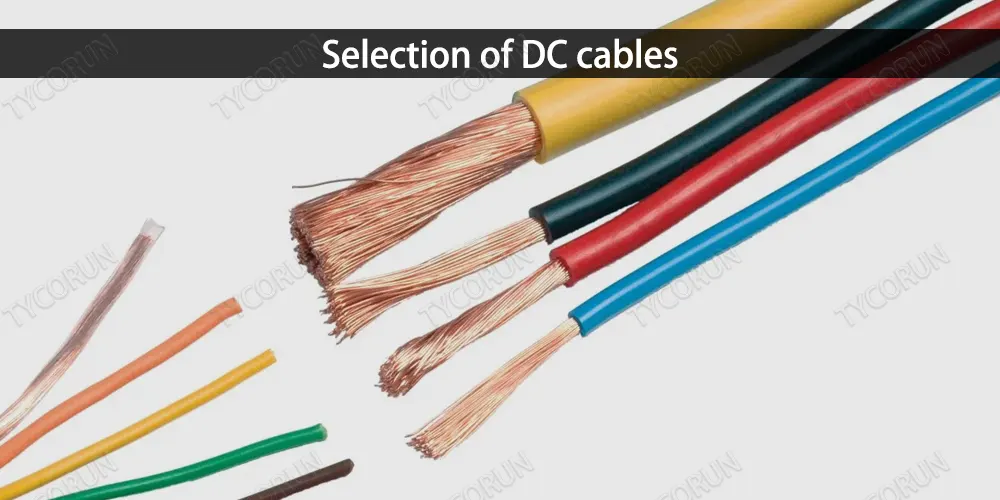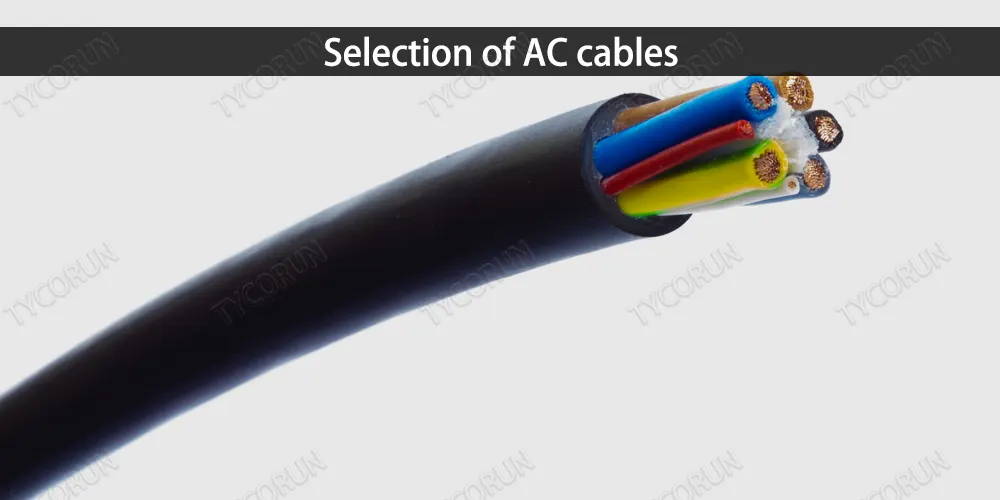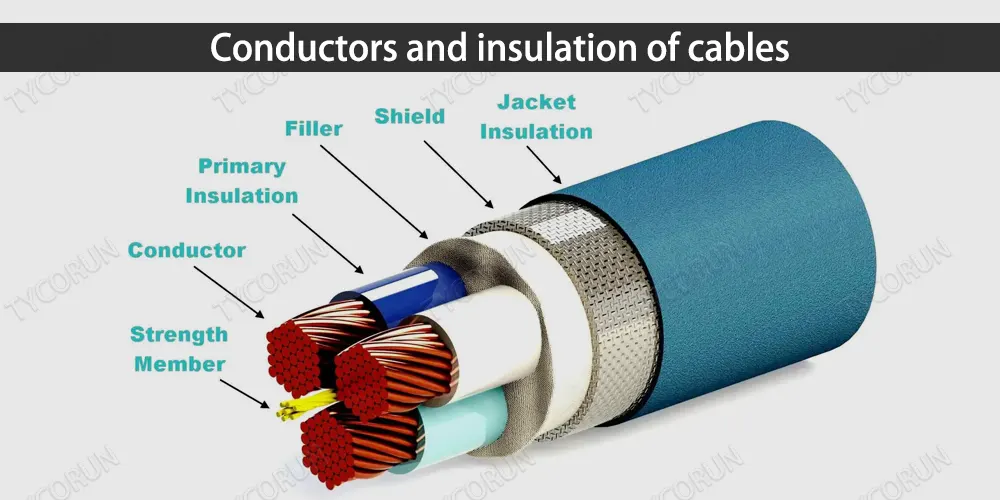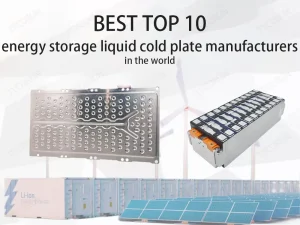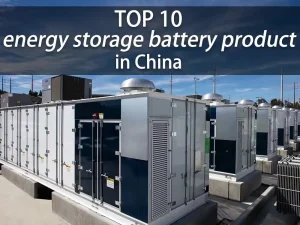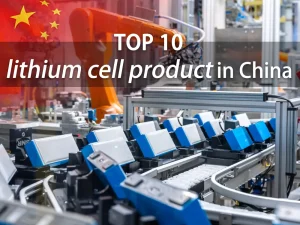Home » battery storage » How to design cables for micro-grid PV energy storage systems
How to design cables for micro-grid PV energy storage systems

Selection of DC cables
The DC cable is selected according to the current of the component or battery pack.
DC cables are installed under the sun, so it is recommended to choose special photovoltaic cables. Unlike ordinary cables, photovoltaic cables are made of materials that are resistant to ultraviolet rays and ozone.
They can also withstand severe temperature changes and chemical erosion and can be used outdoors for more than 25 years.
There are many types of photovoltaic cables, with cross-sectional areas ranging from 1.5 square meters to 35 square meters. The most commonly used one is 4 square meters.
As the current of the photovoltaic modules increases, and the power of the stand-alone inverter increases, the length of the cable also increases.
Therefore, the application of 6 square DC cables is also increasing. Top 10 solar battery manufacturers in China also have new goals for batteries with the current changes in current.
It is generally recommended that the loss of photovoltaic DC should not exceed 2%. We can use this standard to design and select DC cables. The wire resistance of PV 4mm2 DC cable is 4.6mΩ/meter, and the wire resistance of PV 6mm2 DC cable is 3.1mΩ/meter.
If the DC voltage is 600V, a 2% voltage drop loss is 12V. If the current of the module is 10A, the longest distance of the 4mm2 DC cable is 260 meters.
Counting the positive and negative poles, it is recommended that the distance between the farthest end of the module and the inverter should not exceed 130 meters.
If the distance is greater than this, it is recommended to choose a 6mm2 DC cable, but it is recommended that the farthest end of the component be within 200 meters from the inverter.
Selection of AC cables
In order to reduce costs, the components and inverters of photovoltaic power stations are now rarely configured in a 1:1 ratio. Instead, there is a certain amount of over-provisioning based on lighting conditions, project needs, etc.
This is said to reduce initial investment costs. For example, a lithium ion battery power station has an overprovisioning of 1:1.2, the module is 24kW, and a 20kW inverter is used.
How to select the AC cable depends on the maximum current of the inverter, because no matter how much the component overprovisioning is , the inverter has a current limiting function, and the AC input current will never exceed the maximum current of the inverter.
Commonly used AC copper cables for photovoltaic systems include BVR and YJV. BVR means copper-core polyvinyl chloride insulated flexible wire, and YJV cross-linked polyethylene insulated power cable.
When selecting, pay attention to the voltage grade and temperature grade of the cable. When choosing the flame-retardant type, the cable specification is expressed by the number of cores, nominal cross-section and voltage level: Single-core branch cable specification representation, 1*nominal cross-section, such as: 1*95 0.6/1kV.
Multi-core twisted branch cable specification representation, the number of cables in the same circuit * nominal cross-section, such as: 4*185+1*95 0.6/1KV.
Conductors and insulation of cables
Although the cable will also go through a process like battery test to check its quality, here are some purchasing guides. When purchasing cables, we generally look at two aspects: conductors and insulation layers.
As long as there is no problem with these two parts, it proves that the quality of the wire is reliable.
(1) Conductor: Peel off the insulation layer of the cable to expose the copper wire inside. This is the conductor. We can judge the quality of a conductor from its color.
Although they are all called “copper”, they are not 100% pure copper and contain impurities to some extent. The more impurities it contains, the less conductive a conductor is.
The amount of impurities contained in a conductor is generally reflected in its color. The highest quality copper is called “red copper” or “purple copper” – as the name suggests.
The color of this kind of copper is red and purple, showing purple-red and dark red. The worse the copper, the lighter the color and the more yellow it is, which is called “brass”. Some copper has a yellowish color – this copper has a very high impurity content.
There are also some white wires, which are relatively high-end wires. The copper wires are plated with a layer of tin. The main reason is to prevent the copper from oxidizing and forming a patina.
Patina has poor electrical conductivity and will increase resistance. Not only can it increase heat dissipation; it can also improve electrical conductivity and improve wire performance.
In addition, tin plating copper wires can also prevent the insulating rubber from becoming sticky and the wire core from becoming black and brittle, and improve its weldability. DC cables are basically tinned copper wires.
(2) Insulation layer: The layer of rubber outside the wire is the insulation layer of the wire. Its function is to isolate the energized conductor from the outside world, prevent electric energy from flowing outside, and prevent people outside from getting electric shock.
To judge the quality of the insulation layer, the following three methods can generally be used:
Touch, touch the surface of the insulation layer gently with your hands.
If the surface is rough, it proves that the production process of the insulation layer is poor and it is prone to leakage and other faults.
Press the insulation layer with your fingernail. If it rebounds quickly, it proves that the insulation layer is thick and tough.
To bend, take a piece of wire, bend it back and forth several times, then straighten the wire and observe.
If there are no traces on the surface of the wire, it proves that the wire has good toughness. If there are obvious indentations and severe whitening on the surface of the wire, it proves that the wire has poor toughness.
If it is buried underground for a long time, it will easily age and become brittle, and it will be prone to leakage in the future.
To burn, use a lighter to continue burning the wire until the wire insulation catches fire.
Then turn off the lighter and start timing – if the wire can automatically go out within 5 seconds, it proves that the wire is flame retardant.
Otherwise, it proves that the flame retardant ability of the wire is not up to standard, and it is easy to cause a fire when the circuit is overloaded.
Wiring tips for photovoltaic energy storage systems
The circuits of the photovoltaic system are divided into DC parts and AC parts. These two parts of the circuits need to be wired separately.
The DC part is connected to the components and the AC part is connected to the grid. There are many DC cables in medium and large power stations.
In order to facilitate future maintenance, the wire numbers of each cable must be firmly attached. Separate strong and weak wires. If there are signal wires, run them separately to avoid interference.
Prepare conduits and bridges, and try not to expose the wires. When routing the wires horizontally and vertically, they will look better. There should be no cable joints in the cable conduit or bridge as it is inconvenient to maintain.
The above are tips for photovoltaic energy storage wiring tips. As photovoltaic energy storage technology continues to mature, it will become a good choice of energy storage solutions.


